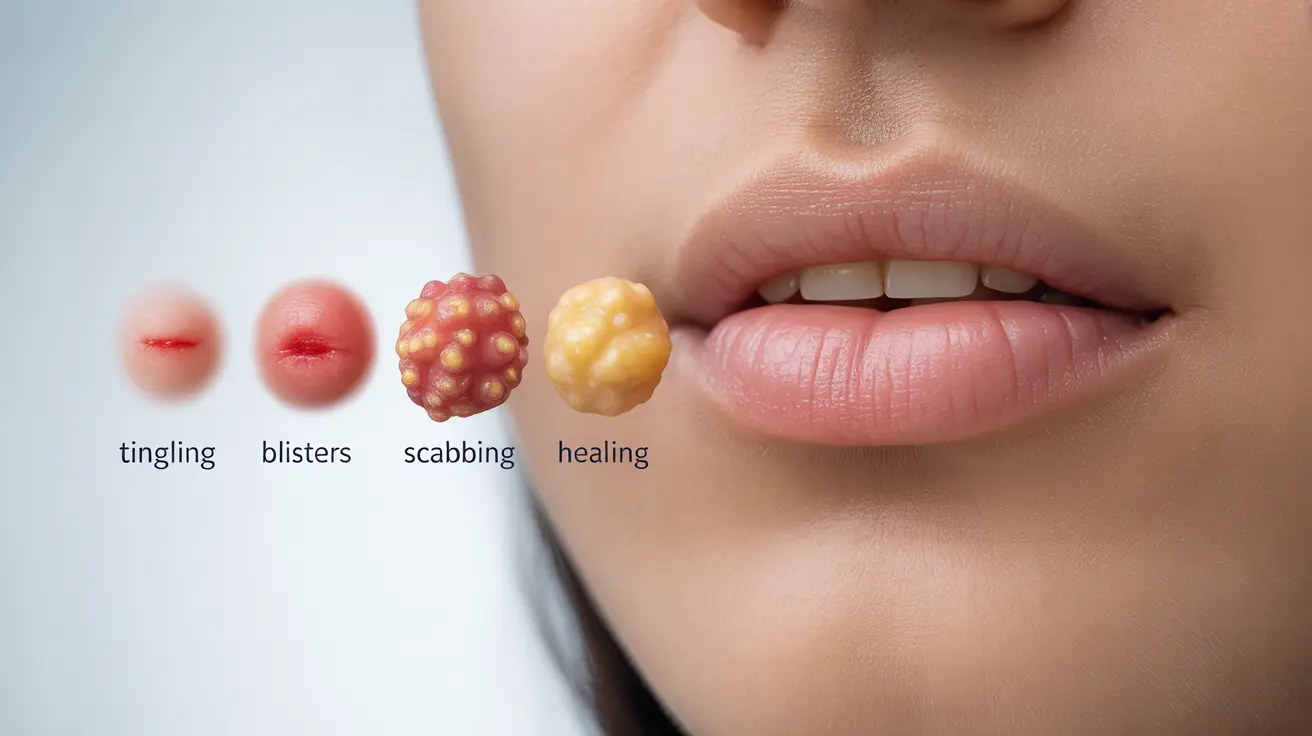Cold sores, caused by the herpes simplex virus (HSV-1), affect millions of people worldwide. Understanding when these painful blisters are contagious and how to prevent their spread is crucial for both those affected and their close contacts. This comprehensive guide will help you understand the contagious nature of cold sores and how to protect yourself and others.
Understanding Cold Sore Contagion
Cold sores are highly contagious from the moment you feel the first tingling sensation (known as the prodrome stage) until the sore has completely healed and formed new skin. This typically spans 7-12 days, though individual cases may vary. During this time, the virus can easily spread through direct contact with the affected area or through sharing items that have touched the sore.
Stages of Cold Sore Contagion
Initial Outbreak Stage
The first signs of a cold sore often include tingling, itching, or burning sensations. Even before any visible blister appears, the virus can be transmitted to others. This early stage is particularly dangerous because many people don't realize they're contagious yet.
Active Blister Phase
When blisters form and eventually burst, the risk of transmission is at its highest. The fluid inside these blisters contains high concentrations of the virus, making this stage extremely contagious. Direct contact should be strictly avoided during this period.
Healing and Scabbing
Even as the sore begins to heal and scab over, it remains contagious. The virus can still be transmitted until completely new skin has formed and all scabs have fallen off naturally.
Transmission Methods
Cold sores can spread through various forms of contact, including:
- Direct skin-to-skin contact
- Kissing or intimate contact
- Sharing personal items like lip balm or utensils
- Touching the sore and then touching other body parts
- Oral contact with shared food or drinks
Prevention Strategies
To minimize the risk of spreading cold sores, consider these essential preventive measures:
- Wash hands frequently, especially after touching or applying medication to the sore
- Avoid touching the affected area unnecessarily
- Don't share personal items during an outbreak
- Replace toothbrushes and lip products after an outbreak
- Apply medication with disposable cotton swabs rather than fingers
Treatment and Contagion Management
While treatments can't eliminate the virus entirely, they can help reduce the contagious period and manage symptoms. Antiviral medications, when started early, may shorten the duration of an outbreak and potentially reduce viral shedding.
Frequently Asked Questions
How long are cold sores contagious and when is it safe to have close contact with others?
Cold sores are contagious from the first tingling sensation until complete healing occurs, typically 7-12 days. It's safe to resume close contact only after the sore has completely healed and new skin has formed.
Can cold sores spread even if no blisters or visible sores are present?
Yes, cold sores can spread even without visible symptoms through a process called asymptomatic viral shedding. However, transmission risk is highest when blisters are present.
What are the common ways cold sores are transmitted from person to person?
Cold sores commonly spread through direct skin contact, kissing, sharing personal items like utensils or lip products, and touching the sore then touching other body parts or surfaces.
How can I prevent spreading cold sores to family members or friends?
Prevent spread by avoiding direct contact during outbreaks, practicing good hand hygiene, not sharing personal items, and being particularly careful around infants, elderly, or immunocompromised individuals.
Do cold sore treatments reduce the contagious period or risk of transmission?
Yes, antiviral treatments can help reduce the duration of an outbreak and may lower transmission risk by decreasing viral shedding. However, the sore remains contagious until fully healed.




